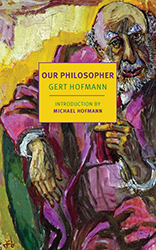David Edmonds’s The Murder of Professor Schlick centers around 1930s Vienna, a cosmopolitan hub of great intellectual, cultural, and political activity, with new ideas in all areas influencing daily life. At the same time, however, it was a place of “ubiquitous anti-Semitism,” as Edmonds terms it. Since Jews were a vital part of the city’s fabric, whatever went wrong or was deemed disagreeable, the Jews were blamed.
And so it came about that in 1936, Professor Moritz Schlick, a German-born gentile who “abhorred conflict” and “believed in civilized, urbane conversation,” was shot and killed at the University of Vienna by a former student. The motive behind the crime was that the shooter believed the philosophy professor was Jewish. At his trial, the murderer, seeking a lenient sentence, claimed that Schlick, although not, in fact, Jewish, “had promoted a treacherous Jewish philosophy.” The ploy worked; he was found guilty, but sentenced to just 10 years in prison, and two years later, when the Nazis occupied Austria, he was pardoned and released.
Prior to his murder, Schlick had chaired the Vienna Circle, a group of philosophers who met regularly to discuss and analyze trends in their fields. The group was “a truly remarkable collection of brilliant minds,” and while outwardly secular, the majority were Jewish, or had some Jewish background.
Although most were major intellectual figures of the time, including Karl Menger, Kurt Gödel, and Hans Hahn, non-specialist readers today are unlikely to recognize the names of those who comprised the Vienna Circle, nor be familiar with the philosophical ideas they pioneered, such as logical empiricism, the theory that knowledge is based solely on empirical evidence, linking philosophy with the scientific method and leaving no room for metaphysics. This movement was, and continues to be, hugely impactful in many fields of study.
Edmonds Identifies Schlick’s murder as the beginning of the end for the Vienna Circle, and by the time war broke out, most of members had fled the city, mainly for the U.S. and Britain, taking their ideas with them and continuing their influence on the study of philosophy. They were the fortunate ones. By war’s end, most of Austria’s Jews had been murdered.
While The Vienna Circle members and other associates remained in contact, the vitality and creativity of the few years they had together could not be revived in exile. As for the city itself after the war, it was, Edmonds writes – concluding this beautifully written, fascinating story – no more than “a medium-size capital of a minor country on a battered continent.”





